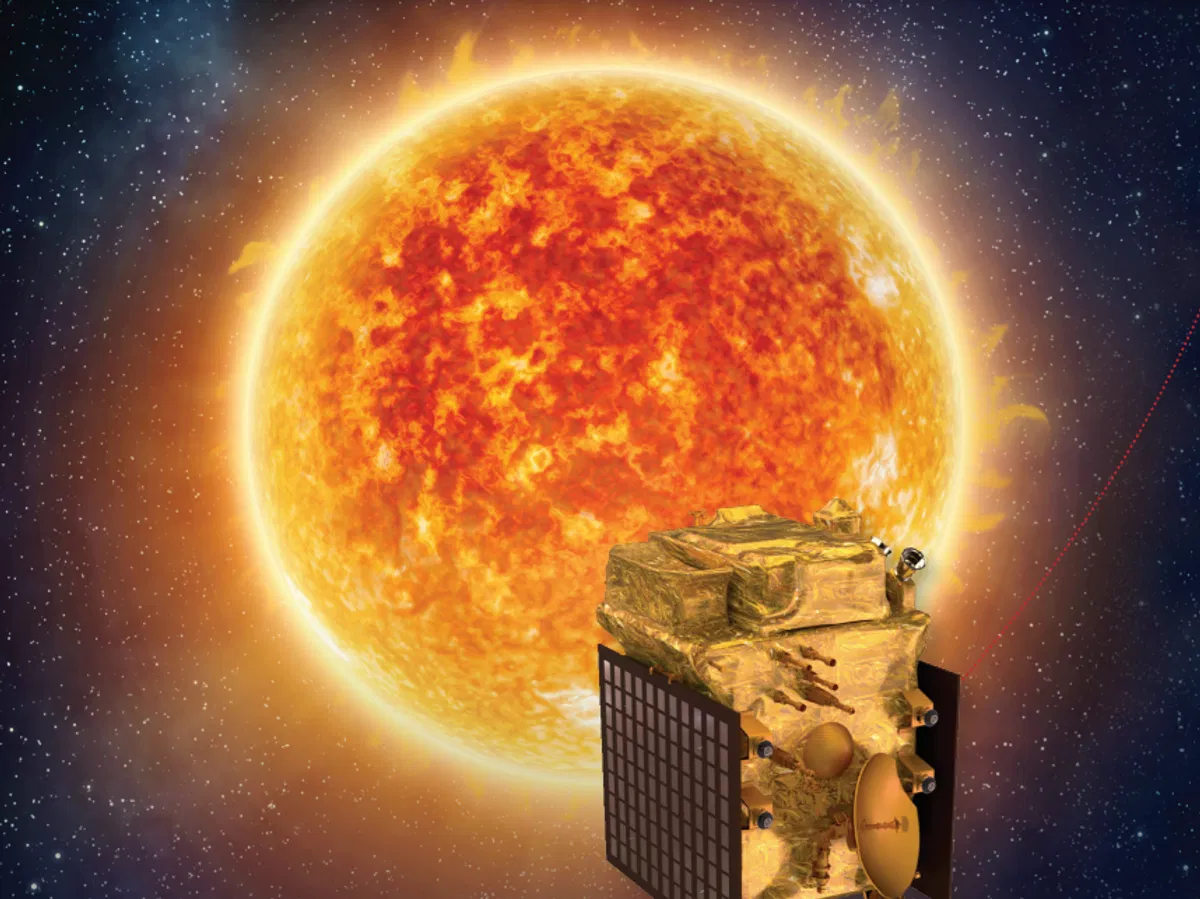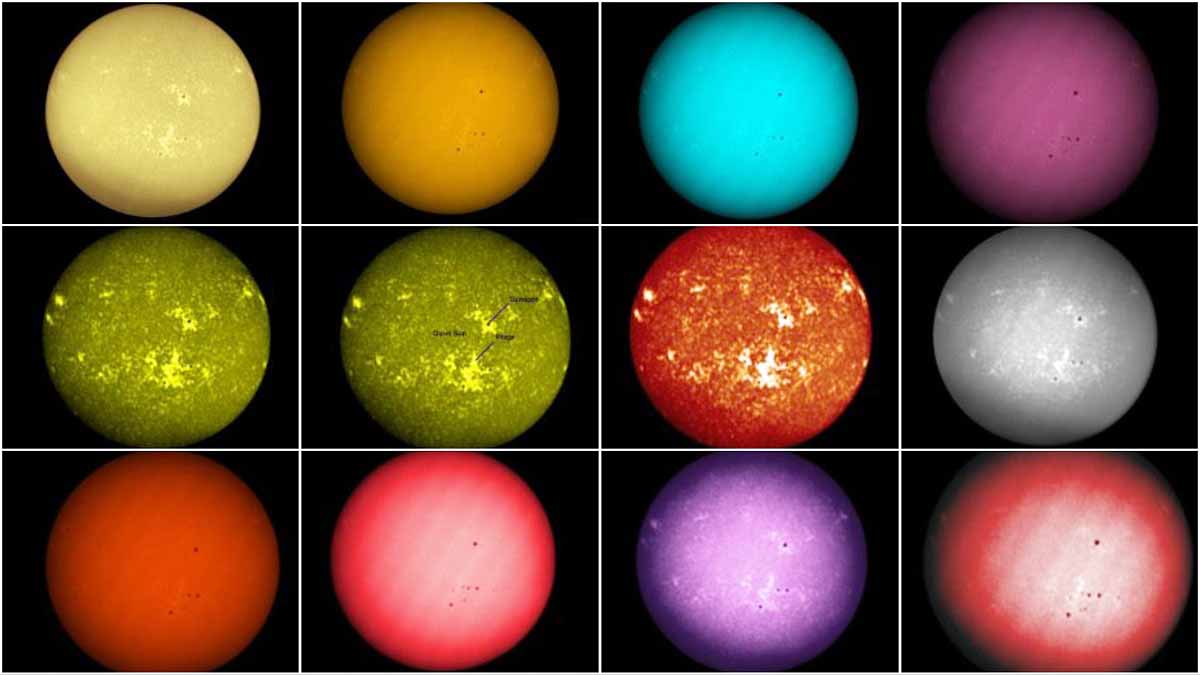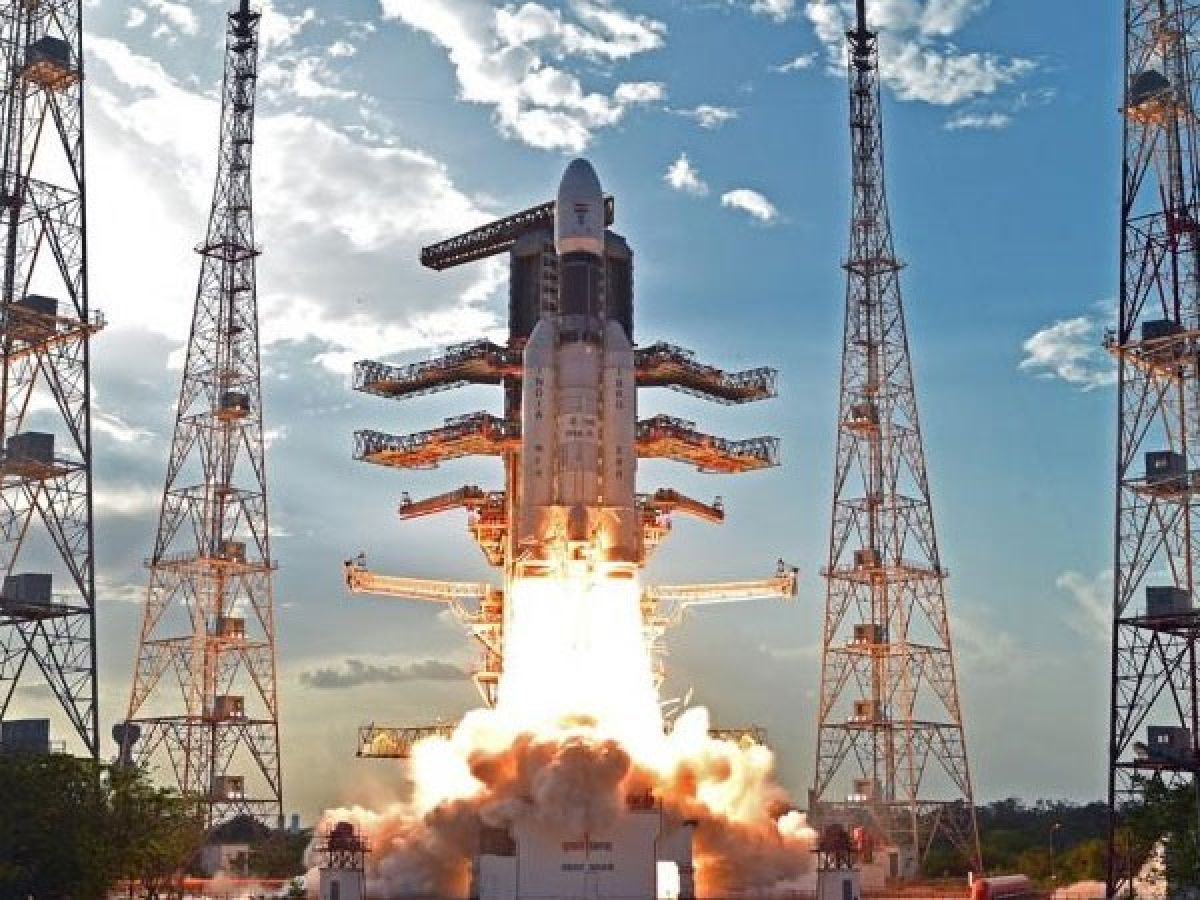Aditya-L1 Mission: From Earth to Lagrange, Illuminating the Sun’s Secrets
ISRO Chief S. Somanath has announced that the Aditya satellite is scheduled to reach the L1 point of the sun on January 6, 2024.
While the exact timing remains unspecified, Somanath confirmed that the deployment of the Aditya satellite at the L1 point is anticipated on the mentioned date. Prior to this milestone, Aditya-L1 transmitted a composite photo showcasing various colors of the sun.
Several days prior, the initial confirmation of the Aditya-L1 mission’s success surfaced. The mission’s Solar Ultraviolet Imaging Telescope (SUIT) achieved a milestone by capturing full-disk images of the Sun for the first time.
These images, obtained at wavelengths ranging from 200 to 400 nanometers, provide a comprehensive view of the sun in 11 distinct colors.
The SUIT payload of Aditya-L1 was activated on November 20, 2023. This sophisticated telescope successfully captured images of both the photosphere and chromosphere of the sun.
The photosphere refers to the thin layer situated between the surface of the sun and the chromosphere, representing the sun’s surface and outer atmosphere. Notably, the chromosphere extends up to 2000 kilometers above the sun’s surface.
Previously, on December 6, 2023, the first light science image of the sun was captured. However, this recent achievement marks a significant milestone as a full disk image has been successfully obtained.
This entails capturing a comprehensive view of the entire front-facing part of the sun. These detailed images reveal sunspots, solar flares, and areas of tranquility on the sun’s surface.
The acquisition of such high-quality images is instrumental for scientists to conduct thorough studies and gain deeper insights into the dynamics of the sun.
Studying The Sun is Essential For Several Reasons:
1. Energy Source for the Solar System: The sun serves as the primary source of energy for our solar system. Understanding its processes and behavior is crucial for comprehending the energy dynamics that sustain life on Earth.
2. Life on Earth: Solar energy is vital for supporting life on Earth. The sun’s radiative energy fuels various biological and ecological processes necessary for the existence of life.
3. Gravitational Influence: The sun’s gravity is instrumental in maintaining the orbits and stability of all the planets within the solar system. Studying the sun helps in understanding the gravitational forces that govern celestial bodies.
4. Nuclear Fusion: The core of the sun undergoes nuclear fusion, generating immense heat and light. Investigating these processes enhances our knowledge of fundamental astrophysical phenomena and the dynamics of stellar interiors.
5. Planetary Understanding: Studying the sun provides insights into the broader context of our solar system. The sun’s behavior influences the atmospheric conditions and climates of the planets, and understanding its role contributes to our knowledge of planetary science.
6. Solar Wind and Space Weather: The sun continuously emits solar wind, consisting of charged particles. This solar wind influences Earth’s magnetosphere and can impact satellite communications and power grids. Studying the sun’s magnetic field and solar wind helps in predicting and mitigating potential space weather effects.
7. Solar Magnetic Field and Explosive Events: The sun’s magnetic field undergoes dynamic changes, leading to explosive events like solar flares and coronal mass ejections. Understanding these events is crucial for predicting and managing potential impacts on space-based technologies and infrastructure.
8. Space Weather Prediction: Solar storms, caused by phenomena like Coronal Mass Ejections (CMEs), can disrupt communication systems, power grids, and satellites on Earth. Monitoring and predicting space weather are essential for safeguarding technological systems and infrastructure.
In summary, studying the sun is fundamental to advancing our knowledge of astrophysics, sustaining life on Earth, understanding the dynamics of the solar system, and mitigating potential space weather impacts on technology and infrastructure.
What is LagRange Point?
The term “Lagrange Point” or “L-point” is derived from the name of the mathematician Joseph-Louis Lagrange, who discovered these points.
Lagrange points are positions in space where the gravitational forces of two large bodies, such as the Earth and the Sun, combine in such a way that a small object, like a satellite, experiences relatively balanced gravitational forces. In these points, objects can maintain a stable position relative to the larger bodies.
For Aditya-L1, the Lagrange Point chosen is L1, which is located between the Earth and the Sun. This strategic positioning enables the satellite to be effectively shielded from the gravitational influences of both celestial bodies.
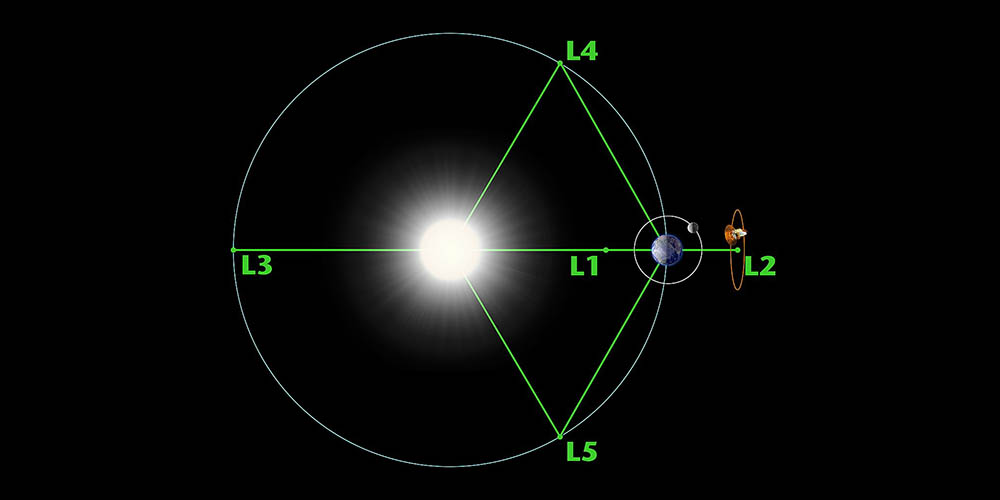
Initially, after launch, Aditya-L1 will orbit the Earth for 16 days, during which its trajectory will be adjusted five times to achieve the optimal velocity.
Subsequently, the spacecraft will undergo a Trans-Lagrange 1 insertion, marking the commencement of its 109-day journey.
Upon reaching the Lagrange Point L1, Aditya-L1 will execute an orbit maneuver to establish its orbital path around this point. This ensures that the satellite remains in a synchronized position relative to the Earth and the Sun, allowing for continuous and stable observations of the Sun’s activities from this advantageous vantage point.
What Is Aditya-L1?
Aditya-L1 represents India’s inaugural space-based observatory, strategically positioned at a considerable distance from the sun.
Despite being exposed to the sun’s intense heat, the spacecraft is designed to withstand these conditions without sustaining damage. The proximity is carefully balanced to ensure effective observation while preventing harm.
The photosphere, the outermost layer of the sun’s surface, registers temperatures of approximately 5500 degrees Celsius, slightly above the sun’s surface temperature.
In contrast, the sun’s core reaches an astonishing 15 million degrees Celsius. Navigating a vehicle or spacecraft into such extreme temperatures, especially at the sun’s core, is currently technologically unfeasible.
Aditya-L1’s positioning allows it to capture valuable data and images of the sun’s outer layers, contributing to a deeper understanding of solar phenomena without risking damage from the sun’s extreme heat.
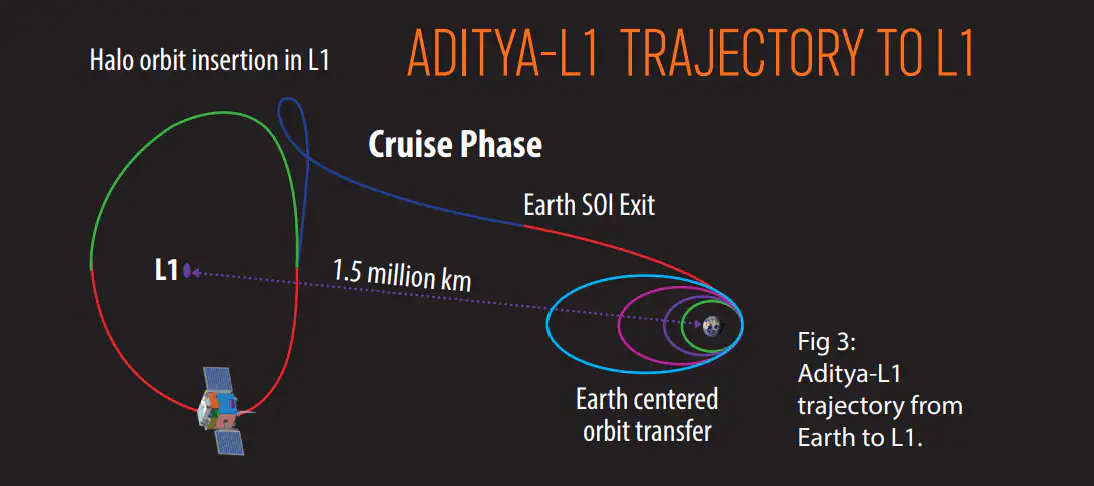
This mission is a testament to India’s advancements in space exploration and its commitment to advancing scientific knowledge about the sun.
What Will Aditya-L1 Spacecraft Do?
Aditya-L1’s primary mission involves studying various aspects of the sun, including solar storms, solar waves, and their effects on Earth’s atmosphere. Here’s a breakdown of the objectives you mentioned:
1. Causes of Solar Storms and Solar Waves:
– Solar Storms: These are primarily caused by disruptions in the sun’s magnetic field, often due to the release of magnetic energy stored in the solar atmosphere. These disruptions can lead to solar flares and coronal mass ejections (CMEs).
– Solar Waves: Solar waves, also known as solar oscillations or solar seismic waves, are caused by the movement of gas and magnetic fields within the sun. They can provide valuable information about the sun’s interior.
Effects on Earth’s Atmosphere:
– Solar storms, especially CMEs, can impact Earth’s magnetosphere, leading to geomagnetic storms.
– These storms can disrupt communication systems, satellite operations, and power grids.
– Intense solar activity can also enhance auroras, the colorful displays in the polar regions.
2. Study of Heat and Hot Winds from the Sun’s Corona:
– Aditya-L1 aims to study the sun’s outermost layer, the corona, to understand the generation of heat and the acceleration of solar winds.
– The corona is much hotter than the sun’s surface, and the mechanism behind this temperature difference is not fully understood.
3. Division and Temperature of Solar Winds:
– Solar winds are streams of charged particles (mostly electrons and protons) that emanate from the sun’s corona.
– Aditya-L1 will investigate the division of solar winds, studying their velocity, density, and temperature variations as they travel through space.
4. Understanding the Solar Atmosphere:
– The mission aims to deepen our understanding of the solar atmosphere, including the photosphere, chromosphere, and corona.
– By studying the dynamics and temperature variations in these layers, scientists can gain insights into the sun’s behavior and its impact on space weather.
In summary, Aditya-L1’s comprehensive study of solar phenomena and the sun’s atmosphere is crucial for advancing our knowledge of solar physics, improving space weather predictions, and understanding the potential impacts of solar activity on Earth’s technological infrastructure.
Which payloads are going with Aditya?
The payload configuration for the Aditya-L1 mission included a suite of scientific instruments to study various aspects of the Sun.
The specific payloads may be subject to updates or changes, and it’s advisable to check the latest information from official sources for the most accurate details.
The Plasma Analyzer Package for Aditya (PAPA) is designed to study the solar wind’s properties, specifically focusing on the directions of electrons and heavy ions, as well as the temperature and weight of charged particles (ions) present in the Sun’s hot winds.
Here’s a breakdown of PAPA’s objectives:
1. Studying Electron and Heavy Ion Directions: PAPA is equipped to analyze the directions of movement of electrons and heavy ions within the solar wind. Understanding the trajectories and velocities of these particles provides valuable information about the dynamics of the solar wind and its interactions.
2. Temperature Measurements: PAPA aims to determine the temperature of the solar wind. This involves assessing the kinetic energy of particles within the wind, helping scientists understand the thermal characteristics of this high-speed stream of charged particles.
3. Weight of Charged Particles (Ions): PAPA will contribute to determining the weight or mass of charged particles (ions) in the solar wind. This information is crucial for understanding the composition of the solar wind and its impact on the space environment.
The data collected by PAPA, along with other instruments on Aditya-L1, will contribute to a comprehensive understanding of the Sun’s outer layers, solar wind characteristics, and the overall behavior of our star. It’s recommended to check the latest information from official sources or ISRO for any updates or additional details about the PAPA instrument and its findings.
The other prominent payloads on Aditya-L1 were expected to include:
1. Visible Emission Line Coronagraph (VELC): This instrument is designed to observe the solar corona in visible light and study the dynamics and properties of the outermost region of the Sun.
2. Solar Ultraviolet Imaging Telescope (SUIT): SUIT aims to capture images of the Sun’s chromosphere and the layers just above it in the ultraviolet range, helping scientists understand the structure and dynamics of these regions.
3. Aditya Solar Wind Particle Experiment (ASPEX): ASPEX is focused on studying the variations in the solar wind’s properties, such as velocity and composition.
MAG (Advanced Tri-Axial High Resolution Digital Magnetometers) instrument: on Aditya-L1 is designed to study the magnetic field around the Sun. It is equipped to investigate both the high-intensity magnetic field in the vicinity of the Sun and the low-intensity magnetic field in the region between the Earth and the Sun.
Here are some key aspects of the MAG instrument:
1. Study of Solar Magnetic Field: MAG is dedicated to observing and analyzing the magnetic field in the Sun’s immediate surroundings. This includes examining the structure, strength, and variations in the solar magnetic field.
2. Investigation of Low-Intensity Magnetic Field: In addition to focusing on the intense magnetic field close to the Sun, MAG is designed to study the low-intensity magnetic field in the space between the Earth and the Sun. This region is critical for understanding the dynamics of the solar wind and its interactions with Earth’s magnetosphere.
3. Instrument Configuration: MAG comprises two sets of two magnetic sensors each, strategically positioned three meters ahead of the main body of the Aditya-L1 spacecraft. This configuration is intended to ensure accurate and high-resolution measurements of the magnetic field.
The data collected by MAG will contribute to a better understanding of the Sun’s magnetic environment and its influence on space weather.
To get the latest and most accurate information about the MAG instrument and its findings, it’s recommended to check updates from official sources or ISRO.
These payloads collectively contribute to Aditya-L1’s mission objectives of studying the Sun’s outer layers, solar winds, and various solar phenomena. Please note that developments or changes may have occurred since my last update, so it’s recommended to check the latest information from official sources or ISRO for the most current payload details.
#Aditya-L1 Mission #space #science














